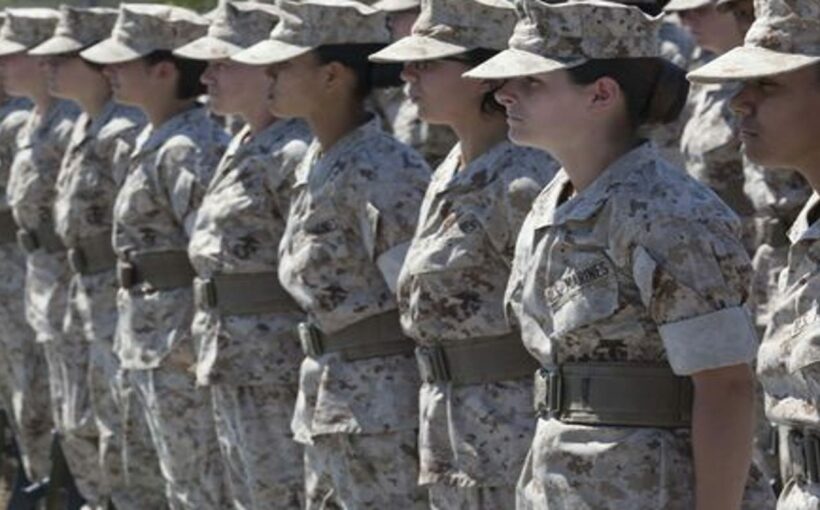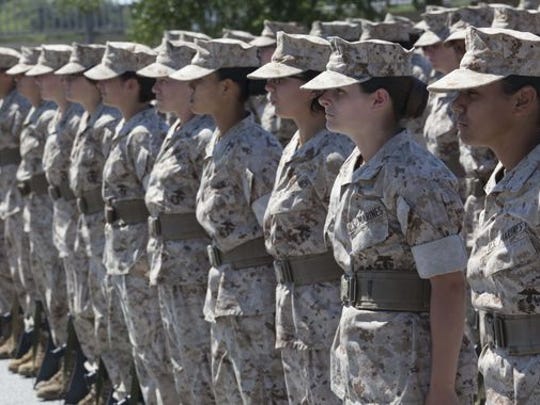Last year was a year of landmark legislation for women veterans. After more than four years of legislative advocacy, Congress passed of the Deborah Sampson Act (DSA) was a significant step in recognizing the need for a more equitable and inclusive Department of Veterans Affairs.
This act, signed into law early this year, includes provisions to address sexual harassment and assault in VA facilities, establish an Office of Women’s Health directly under the undersecretary of VA for Health, and improve access to care and benefits for survivors of Military Sexual Trauma.
Despite this groundbreaking legislative win and women veterans being the fastest-growing group within the veteran community, there are still glaring systemic issues that must be addressed to ensure equitable access to high-quality care for all women veterans. Without proper access to safety measures such as locks on the changing room doors, a choice to see only female physicians, and accessible OB-GYN, women veterans are being pushed out of the VA health care system and choosing to seek care through private insurance or not at all.
Answering the call
The sad reality is, according to the Iraq and Afghanistan Veterans of America’s (IAVA) most recent survey, 14% of our female members still feel unsafe receiving care in VA facilities, and the specific measures of the DSA have yet to be fully implemented.
Navy Secretary Ray Mabus wants to open the last closed billets in the Navy and Marine Corps to women and increase the recruiting of women to 25%. (Photo: Pvt. Crystal N. Curtis, U.S. Marine Corps)
Since 9/11, over 700,000 women answered the call to serve their country. They should not feel like they are risking their physical and mental safety to receive medical care at facilities that are dedicated to serving them. Under Secretary Denis McDonough’s leadership, the VA must continue to aggressively crackdown on VA sexual harassment and create an equal and safe environment for female veterans. As a veteran and sexual assault survivor myself, I don’t utilize VA health care services. I know too many women who have been mistreated in those facilities.
Trust in military is dropping: Maybe public confidence in the military would go up if its leaders shut up
Not only do many women feel unsafe and threatened under the current system, but also unwelcome. And it’s no surprise why. From the moment they walk through the door, women veterans are unrecognized due to the VA motto: “To care for him who shall have borne the battle, and for his widow, and his orphan.”
As women service members and veterans often struggle with imposter syndrome, not fully feeling a part of the veteran community, the non-inclusive motto reaffirms this feeling. This is why IAVA is calling to change the motto to be gender-neutral, fully recognizing all veterans that have served and ensuring that women feel VA is also a place for them.
The female veteran’s double shift
The world of COVID-19 is no stranger to me, as I lived it before 2020 and know firsthand what it’s like to struggle with mental health when you are forced to stay home because of the danger the outside world holds.
In 2016, my son was diagnosed with leukemia. As a single mother, I was forced to quit my job because my son was so acutely immunocompromised that we could only leave the house for medical appointments. I was scared for my son, isolated from my loved ones, and spent every moment caring for him and my infant daughter. To say I was severely depressed is an understatement.
The VA’s time bomb: A new VA wait-time scandal is brewing and we have no way to know how big it is
With the support of my family, I was able to receive the care I needed to persevere. But not everyone has that option. IAVA found 48% of their female members had experienced suicidal thoughts or ideation. Women veterans are almost twice as likely as civilian women to die by suicide, an astounding figure that further highlights the mental health vulnerabilities unique to veterans. VA health services must not only treat mental health symptoms once they appear but also address the root causes of these issues. Under the new administration, it’s crucial to provide support services tailored to our unique needs.
Kaitlynne Hetrick in Washington, D.C., in March 2020. (Photo: Jon Fleming Photography)
The current pandemic has exacerbated the burden on women veterans, especially mothers, as they are forced to bear the mental, physical, and financial struggles of job loss and child care from a home environment. According to IAVA’s survey, 38% of women veterans struggle financially and emergency financial assistance was the number one reason female veterans reached out to IAVA’s peer support and care management program, the Quick Reaction Force. With the “double shift” of childcare and a career, mothers are facing extreme financial, physical, and social stress while they continue to provide for themselves and their families.
Providing safe and accessible care is the first step to building trust in the female veteran community. Without safety measures in place, women continue to be denied the care they need. While COVID-19 child care closures were inevitable, the VA needs to support female veterans and their families by expanding physical and mental health services, child care benefits, and safe housing opportunities for women veterans and their families.
The veteran community would not be the same without the contributions of our female service members. It’s past time we honor their legacy in return. It is crucial we recognize the unique issues our female veterans and service members face so the institutions they rely on can meet them with the support and respect that they have earned.
Kaitlynne Hetrick is a government affairs associate at Iraq and Afghanistan Veterans of America.
You can read diverse opinions from our Board of Contributors and other writers on the Opinion front page, on Twitter @usatodayopinion and in our daily Opinion newsletter. To respond to a column, submit a comment to [email protected].
Source: Read Full Article


